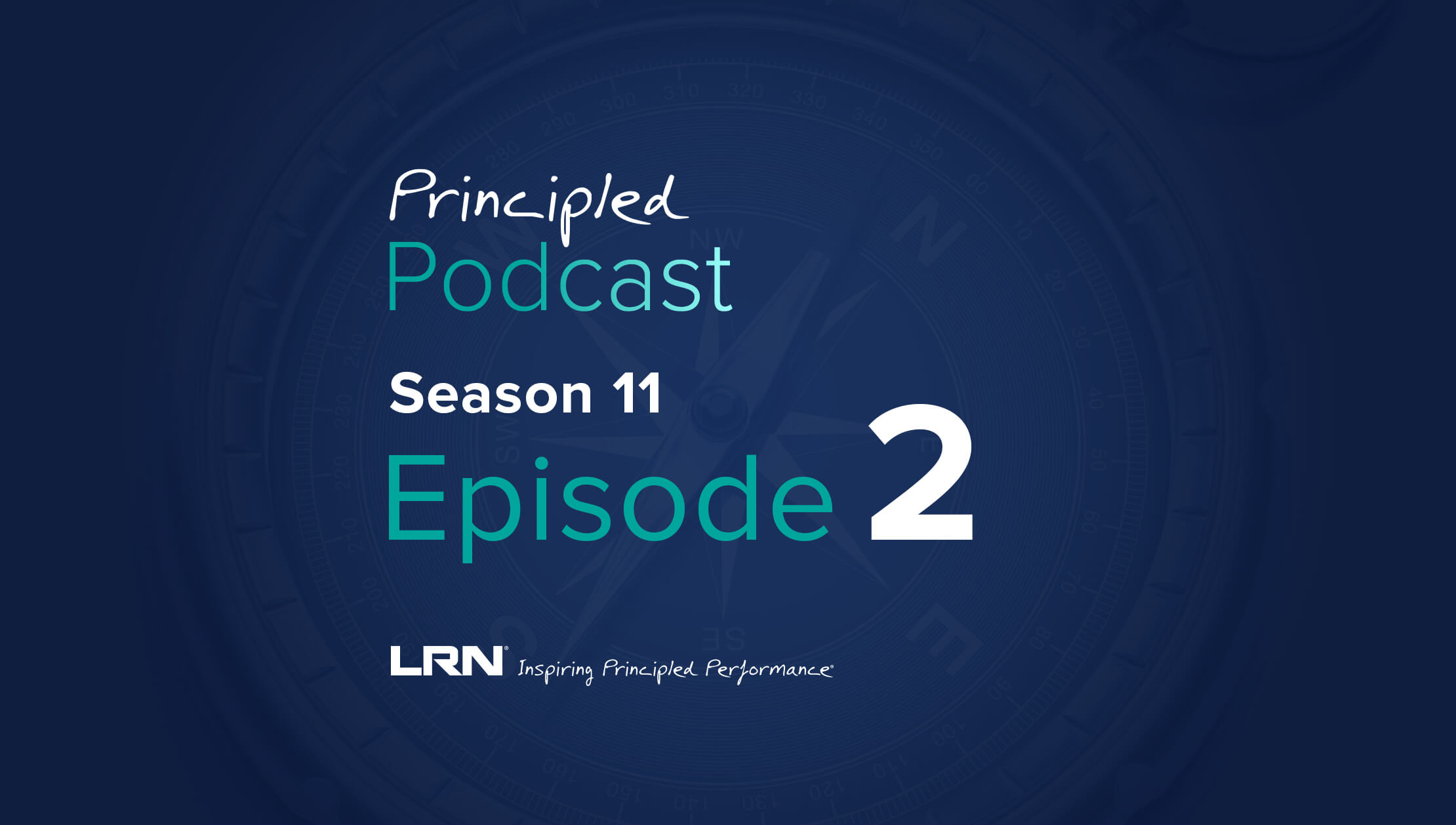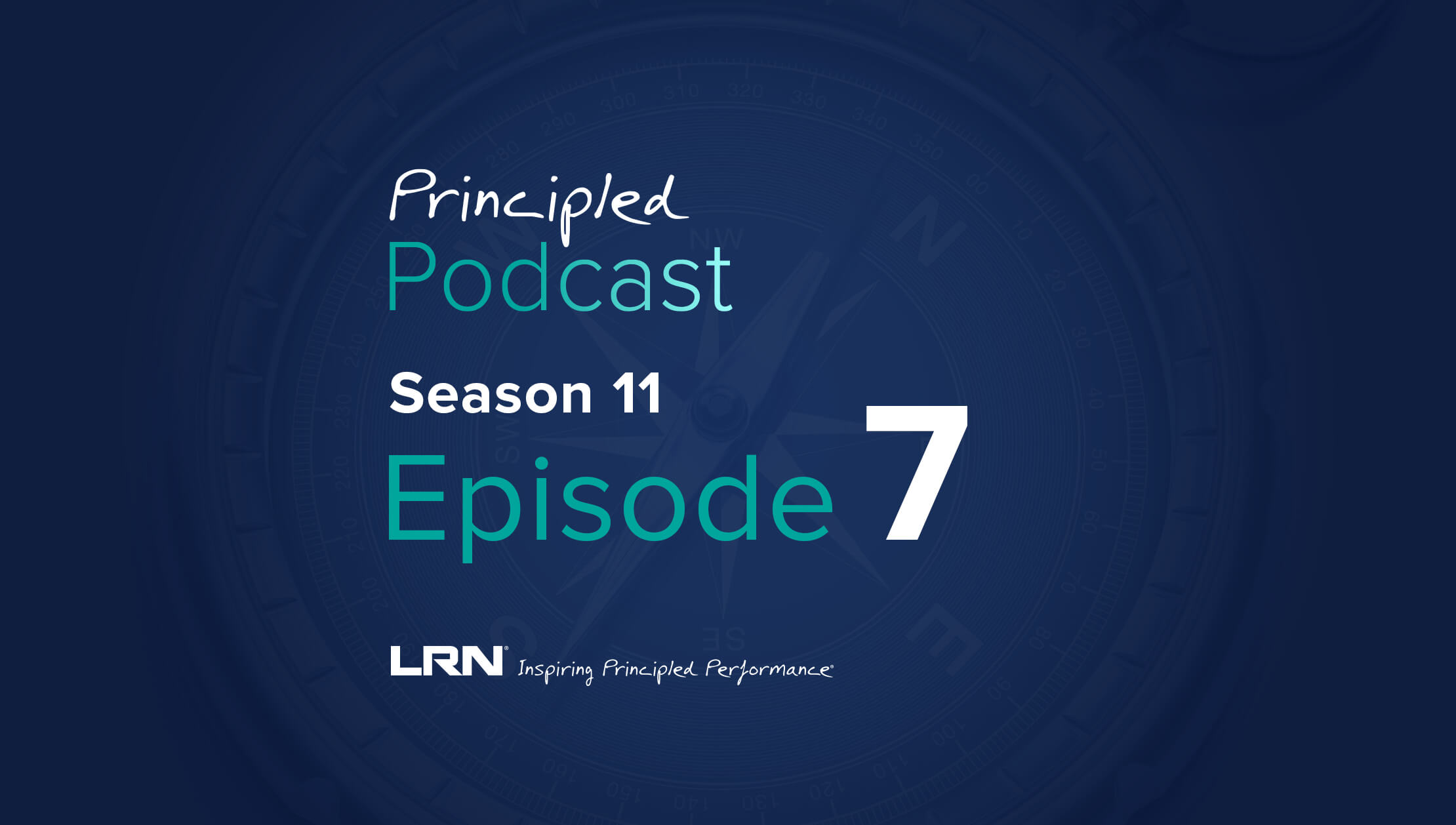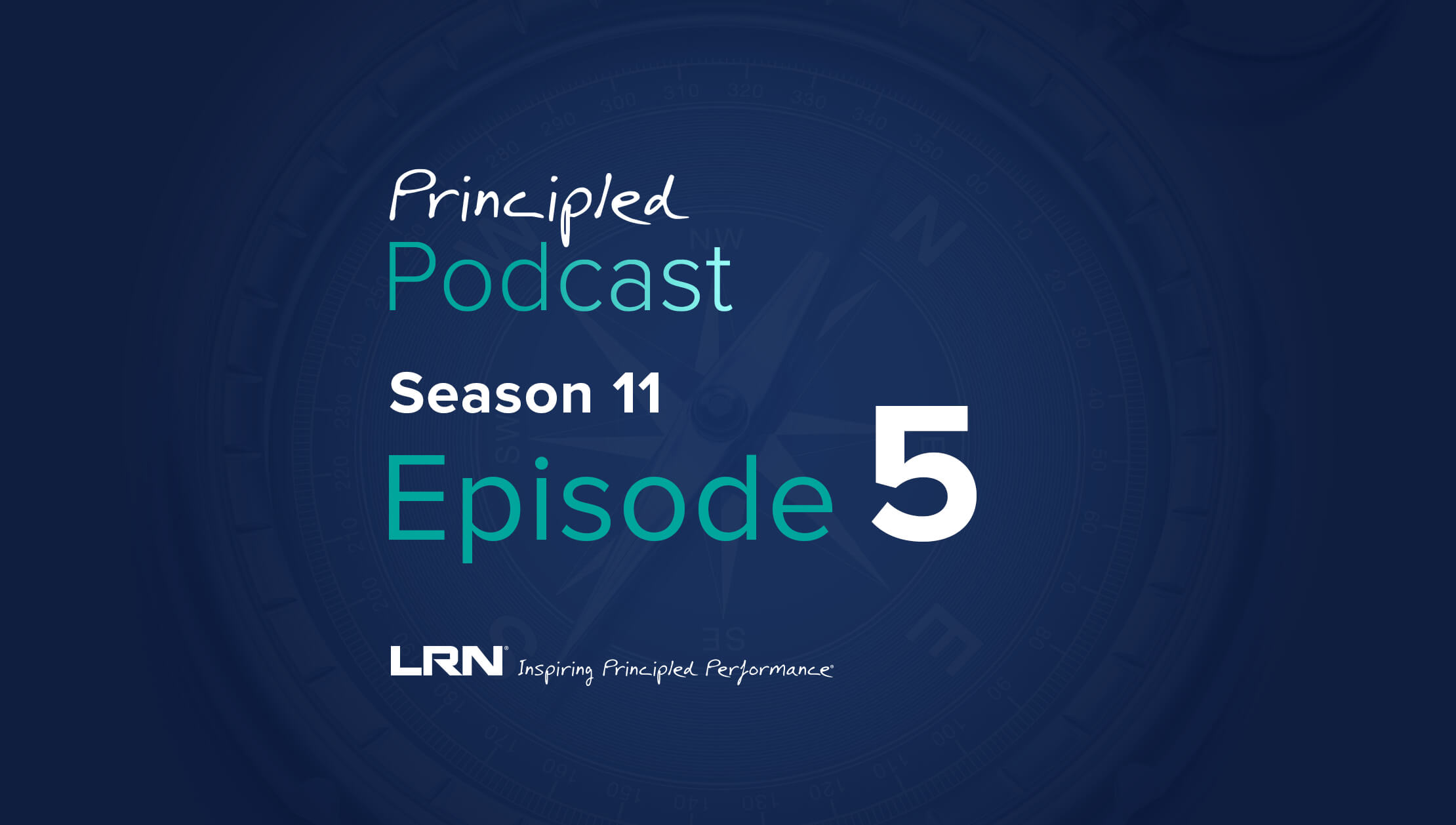What you'll learn on this podcast episode
As the speed of innovation and regulation continues to accelerate, the importance of learner engagement is at an all-time high, especially to help reduce organization risk. How do organizations prioritize communications is a strategy for improving learning and engagement. In this week’s episode of the Principled Podcast, host Dave Hansen, global advocacy marketing director at LRN discusses how to develop effective training and communications that move the needle towards engaged learning with Stephanie Hoyt, education and communications manager for enterprise compliance at BD.
Get a copy of the global edition of LRN’s 2024 Ethics & Compliance Program Effectiveness Report.
Where to stream
Be sure to subscribe to the Principled Podcast wherever you get your podcasts.
Guest: Stephanie Hoyt
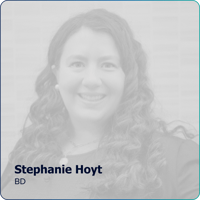
Stephanie Hoyt is a seasoned ethics and compliance professional at BD, specializing in effective communication and education. With over 5.5 years of experience, she leads initiatives to enhance the company's training curriculum, communications strategy, and Code of Conduct. Stephanie designs and implements global education curricula, tracks program metrics, and collaborates with senior management and cross-functional teams. She also serves as Communications Chair for African Americans at BD and the Women’s Initiative Network. Stephanie holds a Bachelor's degree in International Business, Marketing, and Human Resources Management from the University of South Carolina.
Host: Dave Hansen
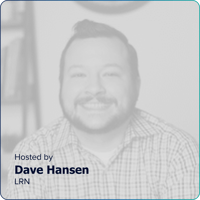
Dave Hansen is the global advocacy marketing director at LRN, an organization focused on ethics and compliance solutions that help people around the world do the right thing. His team drives LRN's customer obsession by building community, deepening customer engagement, and finding meaningful opportunities for collaboration. Dave is passionate about learning, having spent most of his career within higher education or training. He loves sharing customer stories and best practices in the name of continuous improvement. Dave is a proud dad, coffee enthusiast, drummer, and scuba diver. In his spare time, he enjoys cooking and reading!
Principled Podcast transcription
Intro: Welcome to the Principled Podcast, brought to you by LRN. The Principled Podcast brings together the collective wisdom on ethics, business and compliance, transformative stories of leadership, and inspiring workplace culture. Listen in to discover valuable strategies from our community of business leaders and workplace change-makers.
Dave Hansen: As the speed of innovation and regulation continues to accelerate, the importance of learner engagement is at an all time high, especially to help reduce organizational risk. How do organizations prioritize communications is a strategy for improving learning and engagement. Hello, welcome to another episode of LRN's Principled Podcast. I'm your host, Dave Hanson, global advocacy marketing director at LRN. Today I'm joined by Stephanie Hoyt, the education and communications manager for enterprise compliance at BD. We're going to talk about how to develop effective training and communications that move the needle towards engaged learning. Stephanie has specialized in ENC communications for BD, for over the last five and a half years. And has overseen the development of the company's training curriculum, annual corporate compliance and ethics week, communication strategy, and their award-winning code of conduct, among other initiatives. Stephanie, thanks for coming on the Principal Podcast.
Stephanie Hoyt: Hey, Dave. Thank you. I'm excited to be here and discuss this engaging topic of communications with you today.
Dave Hansen: So, let's dive right into it. I think we have a lot to talk through today. First, can you start by telling our listeners a little bit more about BD and your role within the company?
Stephanie Hoyt: Of course. So, BD is a global medical technology company, and we manufacture and sell medical devices. We have over 75,000 associates globally, and we're a large manufacturing base of employees. I would say maybe around half of our employees are manufacturing based. So, we do have that when we are putting out our training and communications. BD has been in business for over 125 years and our purpose is advancing the world of health. A little bit about my role specifically. So, as you said, I am the education and communications manager for compliance, and that makes me the one in charge of designing, coordinating and executing our key program objectives for the compliance program, which includes a comprehensive education and training plan, as well as the communication strategy and framework for our global ethics and compliance department.
Some of my main responsibilities that you covered include training and communications on a speak up culture, our code of conduct, the corporate compliance and ethics week, which happens annually at BD, the training program and policies, system rollouts and more. We do have a five-year training program, but today I think we'll mostly focus on communications, which is something I do for the enterprise compliance program. And then I also do communications for African-Americans at BD and the Women's Initiative Network, which are both associate resource groups or ARGs here on the BD campus.
Dave Hansen: Well, you said a couple of magic words that make me especially excited to dive in today's topic. You talked about global. You talked about being a large organization. You talked about manufacturing, which adds a lot of wrinkles, I think, into what we're getting into today. So, again, excited you're here today. Let's talk about communications, something that happened last season on the principal podcast as we discovered this evolution from training communications to learning and engagement, shifting that focus from input to output. I understand BD is digging into this as well, by developing what you call interactive communications. Can you explain what those are?
Stephanie Hoyt: Yeah. So, Dave, something that stuck out in your question to me actually that I wanted to comment on, is that differentiation between training and learning. So, training, I think most companies would say they have a training strategy, but how many companies have a learning or education strategy? And I think that's something really critical in just those connotation of those words there. Something that we're focusing on to switch over, like you said, from communications to engagement, is this idea of interactive communications. And what that means, at least for us here in the compliance department, means talking or writing and our communications to our audience, so our associates and getting some kind of response back. So, it's not that one-way communication of just putting writing out, but a two-way communication.
You can see how the other person and associate reacts to your message and adjust your message as needed. This is important for big companies, global companies, because it allows for more effective and efficient exchange of information, especially when you're working, like you said, with those different cultures, languages, time zones, et cetera. It also helps to build trust and collaboration with our global associates, as well as our stakeholders and other partners, by showing that we care about them and showing respect, empathy, and understanding. When you get that two-way response back and you take it into consideration and adjust your strategy as needed, it really shows that you care about their opinion and value it.
Interactive communications can also help with creativity, in terms of if you do a poster contest or photo search contest, as well as innovation and problem solving of being able to get that feedback on real life business cases. And it allows for multiple perspectives and feedback at the same time. So, I think I want to go into just a few of those examples that I mentioned that we've implemented here in the compliance program at BD, especially on communications, when we want to talk about top risks for our organization and global organizations in general. So, one of those is a photo search. And what we did is we created a photo with potential conflicts of interest in the office and then uploaded that photo search to our intranet page.
And then associates actually turned in their responses of what they spotted in the picture as potential conflicts of interest to our email address. Associates really liked that, because it was gamified approach of spotting things in this photo, and a real life case scenario as well as things they would actually find in the office, that when they hear about conflicts of interest in more broad terms, they might not think about. Another example of these interactive communications is for corporate compliance and ethics week. We tried a Microsoft Forms for the first time with case studies, that our associates needed to solve and pick the answer that they think they would actually choose in these real life business case scenarios.
This was actually one of our top corporate compliance and ethics week activities last year. I think associates really like the simplicity of the Microsoft Form, as well as, again, that gamified approach to these everyday case studies. And when you receive these results back and you really look into how associates are answering these real life questions, you also then gain some additional behavioral insights of your audience. The last thing I just wanted to mention in terms of specific examples is our app with the LRN, Ethics at Work is what we call it here at BD, and that is our app, which provides another avenue of interaction with our associates, especially on the go. The app includes key contacts, as well as meal limits based on where you are in the world, which are global and traveling Salesforce really like, as well as communications, QRGs, and other policies and our code of conduct.
Dave Hansen: Those are some really cool examples of things that you guys are doing. Thanks for sharing those. The other thing that you said there that I really liked is, it's this idea of it's not one way. We're not just here to check a box anymore. It's that two-way communication, where I think where you started to go with a lot of this was the collaboration, the empathy, getting that extra data point from a learner. So, what drove your team to take this approach? What was that driving moment and then what other benefits have you seen from this?
Stephanie Hoyt: So, I think when we first started doing these types of communications, we ran our analytics on them. Just simple things like how many views did this story get, how many interactions, things like that on our intranet. And we noticed that the interactive communications did significantly better than when we were just doing those one-way communications. And then another thing that came into play as well was that we received some feedback that there's just too much online training right now and not even as it relates to compliance, but quality marketing. All of these different functions are putting out training along with compliance. So, just being very cognizant of how many trainings that you put out. So, especially our online trainings, we are trying to supplement with communications, going through the exercises right now to right size our training, making sure the right people are getting trained on the right risks at the right time.
So, instead of rolling out more online training, something that we've been working on, is doing these interactive communications and other supplemental communications for the organization. I think some benefits of this, they build collaboration and foster trust and creativity as I mentioned in the last question. And it can also enhance communications by providing that feedback loop in and out of ethics and compliance, instead of one way communication of just pushing out information. Associates also get more hands-on experience when they do these activities, versus just reading the information. So, I think the real life examples also help in these scenarios.
Dave Hansen: That's fantastic. I can imagine that many of our listeners are probably going to come back to this episode and listen to some of those examples again, because BD absolutely isn't alone with hearing things like there's too much training or think about retail, where you have people that are working hourly where they have to try to get all of this training in. But if they're hourly, that's time off of the shop floor. So, again, I think the work you're doing here is fantastic. Let's go into some of those challenges then, delivering communications to this global organization. There's got to be a lot of nuance that goes into it, not just the regional stuff, but also the employee population. How does your team manage those comms challenges when they arise?
Stephanie Hoyt: Yeah, Dave. I think that's a great question. I think we discussed how BD is a worldwide company and that especially comes into play with translations. So, for our training we have 19 different languages that we translate into. And for our communications we have designated regional compliance partners who handle our translations when needed into the local language. And I think that really helps in some cases. There are also challenges with cultural differences. For corporate compliance and ethics week, we've tried to implement some things that just don't translate in terms of the culture. And we've had to adjust or do some training on that.
So, I think that's one thing definitely being a global company and dealing with all of those different barriers there. And then we also discuss the employee population being about half manufacturing. That especially comes into play when we're trying to push out training to our manufacturing associates, versus our office corporate employees who are sitting behind computer and are more accessible to online training. For that population, we tend to use shift startup meetings. We do have a manufacturing coordinators network call that I lead quarterly. And that helps us again to get in touch with that population directly.
Something else that we've discovered is giving them hard copies of things, versus just having things available online really helps. So, that Microsoft Form that I was talking about earlier, having that both online, as well as something they could print out and have a hard copy on site. We also use posters to give those short messages out to the manufacturing population base.
Dave Hansen: That scale is just very impressive to me. And I really appreciate and like that strategy of having those regional partners to help with some of those translations. And I'm sure that also helps with some of the cultural stuff. It's something I can relate to at LRN, I help with some of our global holiday party stuff, and trying to manage the cultural expectations for that across the company. It's difficult, so I applaud you for all of that work. It also gets me thinking though a little bit more about effectiveness. What types of metrics does BD use to determine the impact of all of these communications?
Stephanie Hoyt: For our communications, we have easy access to some general metrics, such as click rates, open rates, user and views tracked over time, so you can really narrow it down, certain time periods or certain communications for those metrics. We also track things manually for the regions. That way we have a log of what's going on regionally as well, because we do have those regional compliance partners who do do live trainings and other two-way communications directly with our global associates. We also track metrics, in terms of which communications perform the best in the course of a year, and narrow and pivot our communication strategy to really highlight those top communications. That interactivity that I mentioned, those two-way communications definitely do better in our metrics.
And that interactivity can really help us get and create that better relationship with our associates and also improve our business performance by enhancing our culture. And that's what we've noticed when we put out these two-way communications. It generates really useful feedback, if there's open-ended questions on there, or even to just see behavioral insights in these case studies that we're putting out there. It allows us to listen and learn from our associates. So, we look at those metrics as well.
Dave Hansen: Starting to think a little bit about those behaviors, have you noticed any connections or correlations between communications and behavior then? Things like course completions, hotline reports, something else?
Stephanie Hoyt: Yeah. We really notice an increase in training and communications. When we complete training courses, there's always a certain due date for our office and manufacturing associates. And when we track that to communications that we're putting out around the same time on these topics, we do notice that people tend to really go back to their training, make sure it's complete. And it really drives that completion rate as we put out those emails, intranet stories and things like that. What we've also done with the Ethics at Work app that I mentioned previously is we've done some training notifications through there and tracked how that correlates with our training completions we've also noticed an increase in.
So, we've been using the notifications on the app for that, as well as some additional things. We also noticed that associates are more involved in compliance culture and interact with future communications, once they participate in those interactive communications. I think it's because compliance is then more top of mind, and we've really noticed that during things like corporate compliance and ethics week.
Dave Hansen: I think that's it, again. I mean it's that compliance is more top of mind, and in such a good way, a very healthy way that employees want to. It starts getting to that level of transparency. So, again, I think this is fantastic. Talking a little bit more about the subject of impact and transparency. A crucial element of effective communication is just that, being transparent. And last year, BD, if I've got this correct, won the best code of conduct at the 2023 US Transparency Awards, which is a huge recognition. What were some of the key communications goals that you guys had when developing the BD code?
Stephanie Hoyt: Yeah. So, you are correct. BD was awarded the best code of conduct by Labrador in the 2023 US Transparency Awards. I think when our stakeholders are really evaluating and looking at the ethical behaviors of a company, such as the code of conduct, they really have that respect and trust in the company. It guides and influences the behavior of, not only our associates, but also our board. So, I think that's important in terms of transparency. We did develop our interactive code of conduct with LRN. And it includes interactive navigation and some additional resources that really set apart, I believe our code of conduct.
Among the many ways that BD stood out among our peers, as talked about in this press release for the award, is that it provided a user-friendly interface, offers direct links to policies to ensure accessibility and includes an easy to understand graphic about the reporting process, so that associates can... There's no confusion when they're looking at our reporting process. Some things that I also really like about it, there's Q&A sections, there are what, how and why sections, that was in collaboration with LRN. So, we really wanted to highlight the work that we've done on our code to make it interactive as well.
Dave Hansen: Thanks for sharing that, Stephanie. I'll make sure to pass on some of those kudos to our team as well. I want to shift the questioning a little bit here now. 2024 marks the 10th annual publication of LRNs Ethics and Compliance Program Effectiveness Report, which digs into the latest trends and best practices for ethics compliance programs around the world. This year's report notes that programs still have a lot of room to improve how they deliver communications to reinforce key messages. I'm curious, reflecting on what you've seen in the past and what you'd like to see in the future, what developments do you expect to see in this area over the next year or even the next 10 years?
Stephanie Hoyt: So, in terms of communication specifically, I think as we've discussed, I would love to see interactive and two-way communications become the norm, in terms of compliance communications. Another thing I would really like to see is more easy to digest information. So, think infographics, job aids, quick reference guides, basically more visuals than text heavy, which I think can be some of the problems when you're working with these risks and policies for these global organizations. We started rolling out a lot more quick reference guides in the past few years, and I think our associates really like that easy to digest communications.
And then lastly, I think I would like to see more focus on targeted communications, as well as training. So, like I mentioned before, getting the right message or getting the right audience trained on the right risk at the right time. So, I think really targeting that and not just rolling out broad global communications is something that associates appreciate. And then we're able to kind of track those behavioral insights a little more closely as well.
Dave Hansen: I think those are fantastic insights, especially with a lot of the technology that's available today. And I can imagine it's going to be coming out far into the future. This idea of hyper-personalized, hyper-targeted communications, especially transcending into ethics and compliance is completely possible. So, thanks for sharing that. I'm looking at the time and we're up against the clock here. So, Stephanie, thank you so much for sharing your insights today. It's been very insightful for me. It's been wonderful having you on the podcast. I hope you'll come back and speak with us again soon.
Stephanie Hoyt: Thank you, Dave. And thanks for having this conversation with me. Like I said, I really hope we see more of these topics and this interactivity become the norm as we look into these next few years here.
Dave Hansen: Well, you certainly are up a great leader in the space for it. Once again, my name is Dave Hanson. I want to thank you all for tuning into the Principal Podcast by LRN.
Outro: We hope you enjoyed this episode. The Principled Podcast is brought to you by LRN. At LRN, our mission is to inspire principled performance in global organizations by helping them foster winning ethical cultures rooted in sustainable values. Please visit us at lrn.com to learn more. And if you enjoyed this episode, subscribe to our podcast on Apple Podcasts, Stitcher, Google Podcasts, or wherever you listen. And don't forget to leave us a review.
Be sure to subscribe to the Principled Podcast wherever you get your podcasts.
